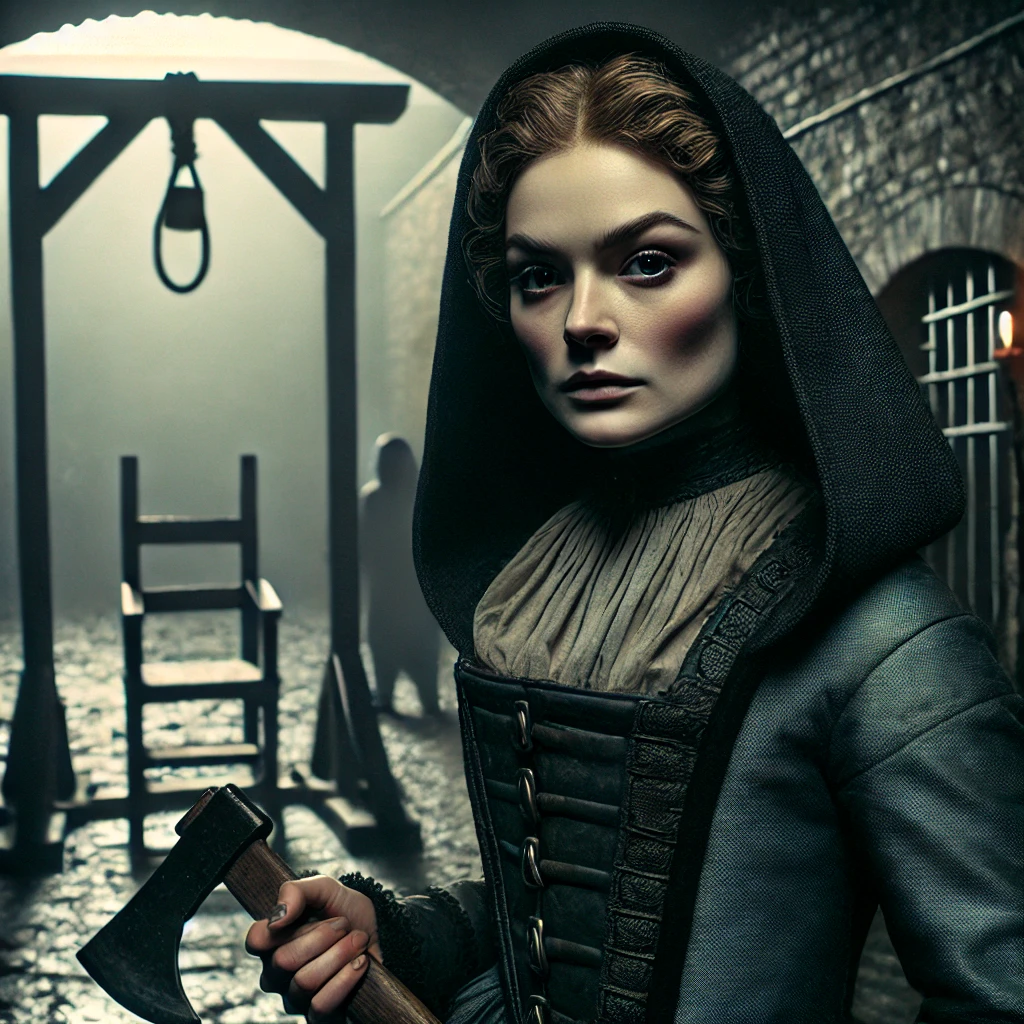
When people think of executioners, they picture hooded men wielding axes, meting out justice (or cruelty) in the name of the law. But Ireland’s most infamous executioner wasn’t a man at all—she was a woman.
Her name? Lady Betty.
Her story? Dark, tragic, and shrouded in legend.
Who Was Lady Betty?
Lady Betty wasn’t born into violence, nor was she raised with the intent of becoming an executioner. Her real name remains a mystery, but history remembers her as Lady Betty, Ireland’s first and only female executioner.
The tale goes that she lived in Roscommon in the late 18th century, a time of hardship, hunger, and lawlessness. Her story is as much about desperation as it is about justice—a tale that blurs the lines between victim and villain.
The Crime That Changed Everything
Lady Betty was not a criminal by choice. She was a poor widow, scraping by to survive in the harsh conditions of 18th-century Ireland. One day, a wealthy stranger arrived at her cottage seeking shelter. Desperation turned to temptation, and she murdered the man for his money.
But fate has a cruel sense of irony.
When the authorities arrived and investigated the murder, they discovered that the stranger was her own son—long lost and unrecognized after years away from home.
The moment she learned the truth, her life changed forever.
From Prisoner to Executioner
Sentenced to death for her crime, Lady Betty was imprisoned in Roscommon Gaol, awaiting execution. But on the day she was to be hanged, the town’s official executioner failed to show up.
Faced with the threat of a riot, the sheriff made a shocking offer: if Lady Betty would take on the role of executioner, her own life would be spared.
She accepted.
From that day on, Lady Betty became Roscommon’s executioner, carrying out her grim duties without hesitation.
Lady Betty: The Executioner Who Feared No One
Her new position gave her power, protection, and purpose. Unlike most executioners, who were feared and despised, Lady Betty embraced her role. There was no mercy in her hands, no hesitation in her movements.
Some say she took pleasure in her work. Others claim she was simply doing what had to be done. Whatever the truth, one thing is certain: when Lady Betty donned the executioner’s hood, she was ruthless.
Her legend grew over the years, and many wondered:
- Did she regret her son’s murder?
- Did she seek redemption in her executions?
- Or did she become a monster shaped by her own tragedy?
History offers no answers. Only shadows.
The Legacy of Ireland’s Female Executioner
Lady Betty eventually faded from history, but her name never disappeared. She remains one of the most infamous figures in Irish folklore, a woman who defied expectations and became a symbol of both justice and horror.
Her story inspired numerous legends, books, and dramatic retellings. Some even believe that her spirit haunts the ruins of Roscommon Gaol, still wielding the axe of her trade.
And though she is long gone, Lady Betty’s legacy lives on in popular culture, resurfacing in unexpected ways.
The Strange Case of Lady Betty Grafstein
Oddly enough, the name Lady Betty isn’t just linked to Ireland’s executioner. Another famous Lady Betty, Betty Grafstein, is a Portuguese-American businesswoman and socialite known for her influence in fashion and jewelry.
While their lives couldn’t be more different, the connection between their names often causes confusion—one linked to glamour, the other to the gallows.
The Female Executioner: A Rare Role in History
Lady Betty wasn’t alone in her profession, but female executioners were rare. Throughout history, few women took up the role, as executioners were traditionally men.
Some other famous female executioners include:
- Elizabeth Sugrue – Another rumored Irish executioner from the 18th century.
- Margaret Waters – Not an executioner, but a notorious figure linked to child murder in 19th-century London.
The idea of a woman wielding the axe was so unusual that it inspired stories, legends, and even costumes—with Female Executioner Costumes becoming a popular choice at gothic and Halloween events.
Lady Betty’s Influence on Modern Fiction
The name Lady Betty has popped up in unexpected places, leading many to wonder if she was the inspiration for certain characters.
One common question is:
Who is the Irish one in Peaky Blinders?
The character of Captain Swing, an IRA leader in Peaky Blinders, embodies the fierce, unyielding presence of Lady Betty. While there’s no confirmed connection, the themes of violence, retribution, and Irish rebellion make it a compelling comparison.
What Happened to Lady Betty’s Executioner’s Tools?
Some say the original gallows she used in Roscommon still exist. Others claim her executioner’s hood and axe were passed down through generations before disappearing into history.
Like the woman herself, much of Lady Betty’s story is wrapped in myth.
Why Does Lady Betty’s Story Still Matter?
Lady Betty’s tale is more than just a gruesome legend—it’s a reflection of Ireland’s history, its struggles, and its shifting perceptions of justice.
She was:
- A mother who became a murderer.
- A prisoner who became an executioner.
- A legend who became immortal.
Even today, when people talk about the Sam Maguire Cup, the Book of Kells, or Ireland’s haunted castles, the name Lady Betty still lingers in the shadows, a reminder of Ireland’s darkest tales.
So the next time you hear the name Lady Betty, ask yourself:
Was she a victim of circumstance?
Or was she the most ruthless executioner Ireland ever knew?
The answer depends on who you ask.



